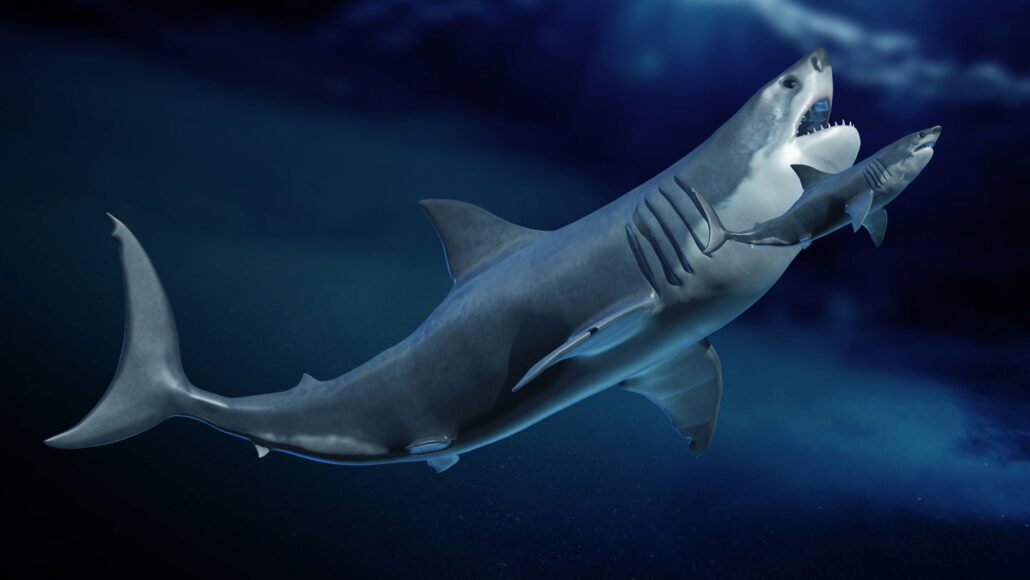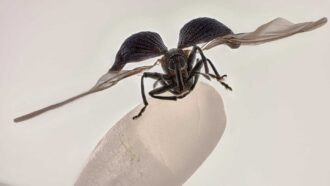calcium: A chemical element and alkali metal common in minerals of the Earth’s crust and in sea salt. It is also found in bone mineral and teeth, and can play a role in the movement of certain substances into and out of cells.
cartilage: (adj. cartilaginous) A type of strong connective tissue often found in joints, the nose and ear. In certain primitive fishes, such as sharks and rays, cartilage provides an internal structure — or skeleton — for their bodies.
extinct: An adjective that describes a species for which there are no living members.
force: Some outside influence that can change the motion of an object, hold objects close to one another, or produce motion or stress in a stationary object.
megalodon: An extinct shark species, Otodus megalodon (formerly Carcharocles megalodon), that lived between the early Miocene (an epoch which started some 23 million years ago) and the end of the Pliocene (roughly 2.6 million years ago). Most scientists believe it was the largest fish to ever live. Its name comes from the Greek and means gigantic tooth. The average adult member of this species could have spanned more than 10 meters (33 feet) and weighed 30 metric tons (66,000 pounds) or more.
shark: A type of predatory fish that has survived in one form or another for hundreds of millions of years. Cartilage, not bone, gives its body structure. Like skates and rays, sharks belong to a group known as elasmobranchs. They tend to grow and mature slowly and have few young. Some lay eggs, others give birth to live young.
vertebrae: (sing. vertebra) The bones that make up the neck, spine and tail of vertebrates. Bones in the neck are called cervical vertebrae. Bones in the tail, for animals that have them, are called caudal vertebrae.
whale: A common, but fairly imprecise, term for a class of large mammals that lives in the ocean. This group includes dolphins and porpoises.








